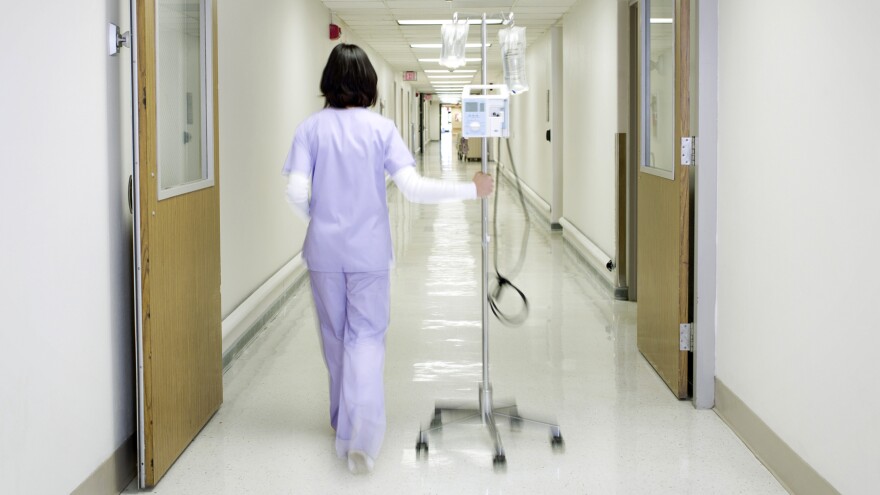Walk past a patient's hospital room, and the flashing control panels on devices by the bed might make you think you're peering at the cockpit of a 737.
Medical technology can make patient care better and more precise. But the gadgets and computers can cause trouble, too. One big problem is that most of the devices can't communicate with one another.
The ultimate technological goal is what the engineers call interoperability. Let the ventilators, IV pumps, heart monitors and computers holding patient records communicate and update one another automatically.
But that's a long way off.
When the IV pump can't talk with the patient's electronic health record, guess who winds up being the translator? The nurse.
The electronic Babel at the patient's bedside places a heavy burden on nurses and exacts a toll on patients.
Half of more than 500 nurses surveyed by the Harris Poll said they had seen a medical error caused by a lack of coordination among devices.
And nurses spend a lot of time dealing with the devices. More than two-thirds said they spend at least an hour a shift dealing with devices. A majority of the nurses said they spend quite a bit of time troubleshooting problems, recording data that isn't shared electronically and dealing with alarms, according to the online survey conducted in January.
The survey was commissioned by Gary & Mary West Health Institute, a nonprofit that is focused on health quality and costs. "Nurses on the front line have to deal with a multitude of the devices to provide the best care," says Nicholas Valeriani, CEO of West Health, the institute's parent.
The burden on nurses can be lightened, he says, with better technology.
Makers of the medical devices need to agree on communication standards, he says, and their products need to be able to talk with electronic health record systems, too. Incentives for manufacturers, such as accelerated review of compliant products by the Food and Drug Administration, could help speed up adoption, he says.
The lack of coordination among devices is a daily problem across the country. "The nurse ends up having to have a toolbelt on just to deliver care," says Linda Burnes Bolton, chief nursing officer at Cedars-Sinai in Los Angeles.
Cedars-Sinai has worked with its vendors to fix some of the issues. The hospital has been able to get its electronic health records to connect to infusion pumps.
A doctor's medication order can be transmitted electronically to the pump, which a nurse verifies before hitting start, says Jennifer Jackson, an engineer who directs device integration at Cedars-Sinai. But Jackson says this wasn't an off-the-shelf solution: "It still requires that vendors have to write special code to make the connections happen."
Copyright 2021 NPR. To see more, visit https://www.npr.org.





